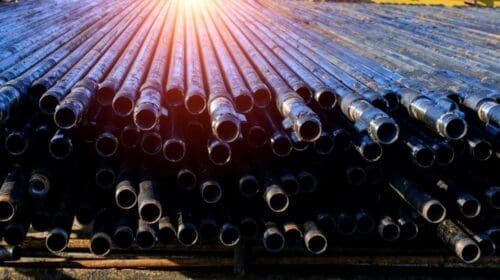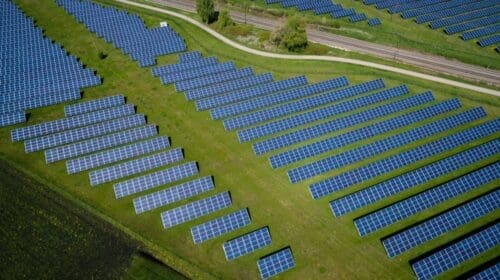The oil and gas industries have not historically been among the early adopters of digital technologies. However, times are changing, and more decision-makers in these sectors realize there’s no time to waste in learning more about how a digital retrofit could strengthen operations.
Oil and gas still have a long way to go to catch up to other industries. A survey of entities in the United Kingdom that ranked digital maturity levels placed oil and gas last.
Here are four reasons why leaders at companies in these sectors should strongly consider digital updates sooner rather than later.
1. They Can Help the Oil and Gas Industries Save Money
Pursuing digitization in highly strategic ways can help companies become more competitive. Audun Martinsen, the head of oilfield services research at Rystad Energy, told the recipients of a November 2020 email that as much as $100 billion could be saved in the oil and gas industry if parties moved ahead with digitization plans.
Martinsen clarified that much of the savings come from supply chain improvements and increased labor productivity. He said cutting costs in those areas is crucial given that the per-barrel oil price stayed range-bound in the low $40s.
“With low oil prices and a focus on emissions reductions, digitalizing the oilfield is important to realize cost savings and to keep emissions down so [exploration and production companies] adhere to their [greenhouse gas] targets,” Martinsen added.
It’s becoming more common for consumers to use smart thermostats to control their energy expenses. For example, models allow homeowners to save up to 15% on cooling costs, making them appealing to budget-conscious households. The thermostats usually recommend which settings will save the most money.
Energy company executives can get similar benefits by using data collection and analysis tools to determine the costliest processes or events. They can also monitor information over time to verify whether implemented changes cause the desired effects. If not, they can make adjustments to improve outcomes before investing too much in something that does not seem as cost-effective as initially envisioned.
2. They Can Provide Improved Visibility
Digital retrofitting opens opportunities for company executives to identify competitive advantages and weaknesses. Plus, innovative technologies can enable leaders to prevent unwanted outcomes. Owners don’t want a crucial piece of equipment to fail during an oil exploration project since the initiative could get behind schedule and quickly become more expensive than planned.
However, predictive maintenance solutions provide details about likely breakdowns before they happen, giving decision-makers the time to take corrective action that avoids an operational shutdown. Oil and gas companies can make the most of advanced connectivity by helping machines communicate with each other and reduce the need for ongoing human supervision.
G Balaji is the vice president and head of the energy industries division at ABB India. He explained, “Oil and gas companies are looking at connecting the oil fields, refineries and the pipelines that will seamlessly share the information about the performance and process productivity to the next level, for improving efficiency, security and safety. They are also exploring collaborative and integrated operations with remote management to drive business continuity with reduced costs and risk.”
He added, “When the connected field devices and machines understand the information because they use the same communication protocol, they understand the message and respond accordingly. This coordinated interaction between devices creates [an] autonomous state and helps the machines perform any task with minimum supervision. Using advanced methods such as industrial artificial intelligence is an area of focus for ABB toward building an autonomous future for the industries.”
3. They Can Make the Work Safer
Depending on what technologies company leaders choose to pursue, a digital retrofit could reduce risks for workers and prevent catastrophic accidents that result in preventable costs and reputational damage. However, when executives have more data about the most dangerous tasks, it’s easier for them to prevent those occurrences and minimize the adverse outcomes when they do happen.
Companies may also use systems to determine the severity of incidents. The RP 754 is a framework from the American Petroleum Institute that includes four safety indicator tiers. Imagine a severe situation that does not have serious consequences but engages a company’s safety systems. Such circumstances fall into the Tier 3 category, meaning they show decent safety, but leaders should still examine what went wrong to prevent similar issues from happening again.
If a company invests in the Industrial Internet of Things (IIoT), representatives could obtain data to support overall improved safety for all employees. In one example, Marathon Petroleum Corp. updated its premises with a wireless multigas detection system to replace the portable units the company’s workers carried.
It was then possible to determine workers’ locations and include panic buttons and motion sensors on each gadget. When the sensors detected gas or an inactive worker, they activated a larger infrastructure that triggered local alarms and collected environmental readings. This is one example of how digital retrofitting can make the oil and gas sectors safer for all team members.
4. They Can Bring Improved Resilience
The oil and gas industries have experienced some tough times lately. Digitization is not a guaranteed strategy for recovery, but it can help as long as decision-makers invest wisely and determine how technologies can help. It’s not sufficient to merely move ahead with implementing digital updates just because competitors have done the same. Executives must assess what’s holding their companies back and how upgrades could help.
More than 100 oil and gas companies declared bankruptcy in 2020. Additionally, the share prices for the five international oil majors have yet to return to the levels they showed before the COVID-19 pandemic hit. These realities have made analysts assert that there’s no better time to get on board with digital upgrades if executives haven’t done so already.
Experts also note that the oil and gas sectors are in prime positions to capitalize on digitalization because the companies within them cover the downstream, midstream and upstream areas of the industry. In other words, they deal with everything from oil exploration and extraction to preparing the product for consumers.
That broad participation in the industry enables leaders to scrutinize activities at all points of the value chain and determine how digitization could make meaningful differences in outcomes. That may mean investigating opportunities that are not yet widespread in the gas and oil industries. For example, 3D printing may allow creating equipment components on-site in a few days or less rather than obtaining them from a distant supplier.
A Digital Retrofit Could Brighten a Company’s Future
It’s time for the oil and gas industry to look ahead and get ready for what’s to come. Investing in a digital retrofit is a wise way to do that, particularly since that decision can bring so many lasting benefits.
Emily Newton is the Editor-in-Chief of Revolutionized, an online magazine discussing the latest industry innovations and trends.
Oil and gas operations are commonly found in remote locations far from company headquarters. Now, it's possible to monitor pump operations, collate and analyze seismic data, and track employees around the world from almost anywhere. Whether employees are in the office or in the field, the internet and related applications enable a greater multidirectional flow of information – and control – than ever before.









